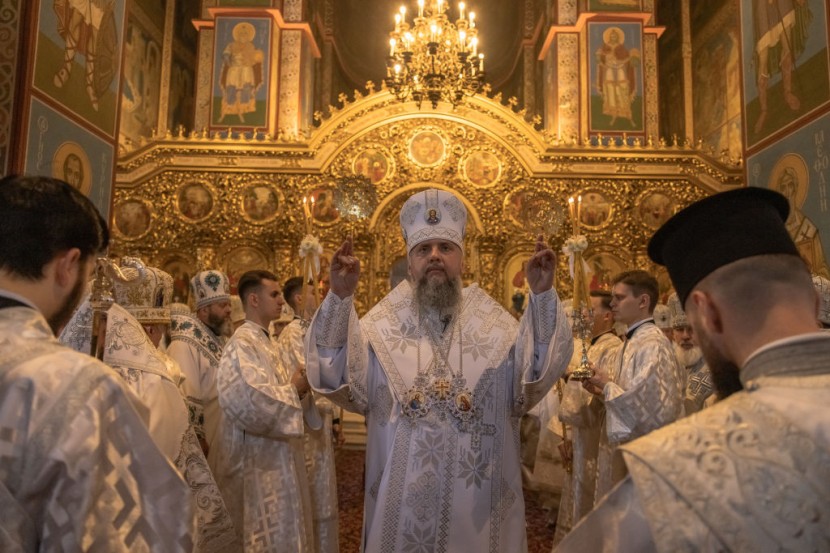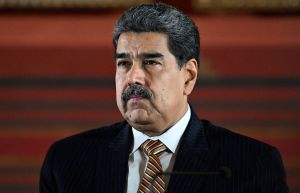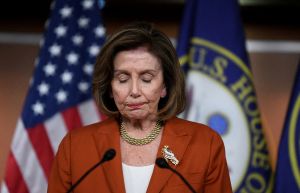
Christians of the Western tradition begin their liturgical year every Advent, the season just before Christmas. However, Eastern Christians celebrate its liturgical new year every September 1.
And for Ukrainian Christians, most of whom follow the Eastern tradition and whose country was invaded by the Russians, September 1 is a pivotal point for how they worship.
Beginning Friday (September 1), Ukrainian Christians, both Orthodox and Catholic, are modifying their liturgical calendars, which are based on the Julian calendar, to allow their congregations to celebrate Christmas on December 25 instead of January 7.
The latter date is when Russian and other Orthodox Christians celebrate.
Julian vs. Gregorian Calendars
Before the calendar reforms of Pope Gregory XIII, the world in its entirety had been using the Julian calendar. But over time, specifically in 1582, the pope noticed two very important issues with the Julian calendar.
First, it incorrectly assumed the average solar year was exactly 365.25 days long, an overestimate of a little under one day per century, thus allowing a leap day every four years.
Secondly, the Julian calendar has allowed more leap days, which caused the Julian calendar to drift away from the intended dates when equinoxes and solstices should happen. This discrepancy is crucial for Christians as it would also determine the calculation of the date of Easter for that year.
As a remedy, Pope Gregory instituted a reform in which the calendar year was shortened by 0.0075 days to stop the drift of the calendar concerning the equinoxes. He published the papal bull "Inter gravissimas" on February 24, 1582, to implement the changes. He also advanced the date of that year by 10 days. In particular, October 4, 1582 would be followed by October 15.
Thus, the Gregorian Calendar was born.
Why Still Use the Julian Calendar?
However, the calendar reforms were created after the Great Schism of 1054 and, by the time of its publication, the recent Protestant Reformation of 1517. This meant Orthodox and Protestant Christians, respectively, had no obligation to follow the Gregorian calendar.
But eventually, Protestant-dominant states and most of the world adopted the Gregorian calendar around 200 years later in the 18th century. Notably, the British Empire and its American colonies adopted it in 1752, while Sweden did so a year later in 1753. The latest to adopt the calendar was Saudi Arabia in 2016.
On the other hand, Orthodox-dominant nations have only adopted the Gregorian calendar in the 20th century for secular purposes, with Greece being the last to do so in 1923. However, many churches in these nations, including the Greek monastery region of Mount Athos, still follow the Julian calendar in determining their liturgical seasons. Russia, Ukraine, and many other nations that composed the former Russian Empire adopted the Gregorian calendar in 1918.
Most of the Orthodox world has also discerned following the Gregorian calendar as early as 1924
Read Also: New Russian Malware Targets Ukrainian Military Devices, Seeks To Know Ukraine's Battle Plan
The Turning Point
According to Religion News Service, Orthodox Ukrainians saw the traditional Julian calendar as one of the anchors of their church's identity for centuries, both as a sign of resistance to Latinization by the Catholic monarchs of Poland and Lithuania reigning in western Ukraine and as resistance to the Soviet system.
But in recent decades, the Julian calendar has become associated with support for Russian Orthodoxy, not Ukrainian.
The war in Ukraine changed everything, even the country's dominant religion.
Prior to the war, the congregations in Ukraine were aligned with the Moscow Patriarchate. Many Ukrainian Orthodox Christians, since the end of World War I have dreamed of having a national church that is uniquely Ukrainian. However, the Second World War and the Cold War under the Soviet Iron Curtain prevented them from doing so.
The division of loyalties has run deep since independence from the Soviet Union, with adherents either affiliating to the Ukrainian Orthodox Church, which is spiritually aligned with the Patriarch of Moscow, and the independent Orthodox Church of Ukraine (OCU), which was leaning more towards the Patriarch of Constantinople, which formally recognized its self-governing nature in 2019. To make matters worse, Kyiv is the birthplace of Slavic Christianity, and both churches claim hegemony over its cathedrals and monasteries.
But with the war raging in Ukraine's southeast, many Orthodox Ukrainians affiliated with the independent church have started to use Ukrainian rather than Church Slavonic - a language closer to Russian - in its liturgical services.
A Ukrainian Christmas in December
As a result of the war, both the OCU and the Ukrainian Greek Catholic Church (UGCC) have decided to distance themselves from the Moscow patriarchate and adopt a modified Julian calendar where the fixed-date feasts of Christmas and the Protection of the Virgin Mary would be moved 13 days earlier on December 25 and October 1, respectively.
Meanwhile, Easter, a movable holiday, would still be determined according to the old rules, the Odessa Journal reported.
The decision to move the celebration of Christmas to align with that of its Western neighbors was also approved by Ukrainian President Volodymyr Zelensky, who some sources say came from a Jewish background.
The change effectively switched Ukrainian Christians from the Julian calendar to the Gregorian, but parishioners and congregations who were not yet ready to transition would be given two years to do so.
Epiphany, the independent Orthodox Archbishop of Kyiv, announced the historic change was five years in the making.
"People have constantly asked me when the Church would finally mature and make such a responsible decision," he said. "I have always said that when we feel that our faithful, the Ukrainian people, are ready for it."
Earlier this year, Epiphany's Catholic counterpart, Archbishop Sviatoslav Shevchuk, announced a similar modification of its liturgical calendar for Ukrainian Catholics as a way of breaking cultural links to Russia. According to the UGCC, 90% of Ukrainian Greek Catholics supported the move away from the Julian calendar.
Related Article: Ukrainians Slam Pope Francis for Message to Russian Catholic Minority
© 2025 HNGN, All rights reserved. Do not reproduce without permission.








